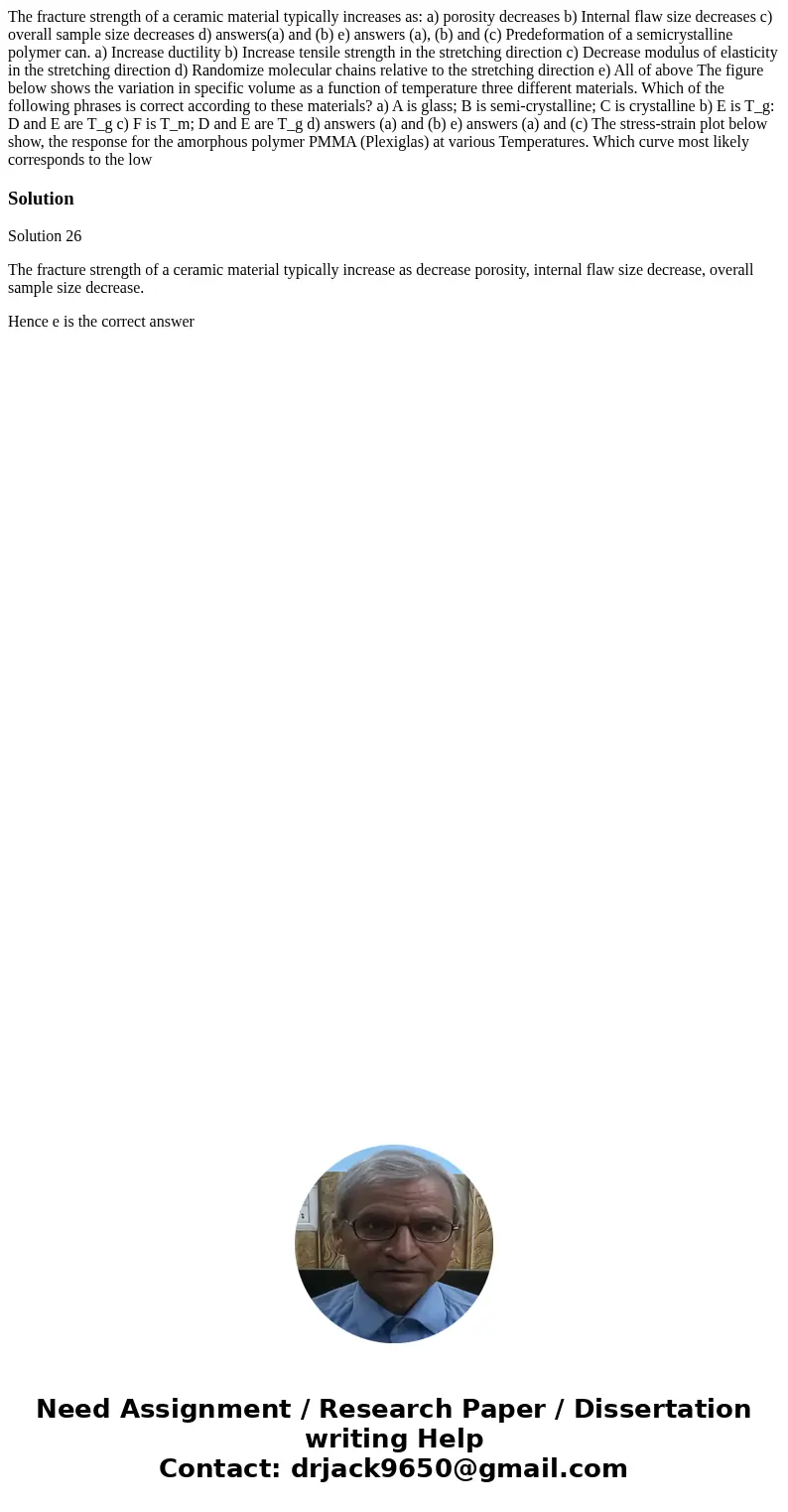The fracture strength of a ceramic material typically increa
The fracture strength of a ceramic material typically increases as: a) porosity decreases b) Internal flaw size decreases c) overall sample size decreases d) answers(a) and (b) e) answers (a), (b) and (c) Predeformation of a semicrystalline polymer can. a) Increase ductility b) Increase tensile strength in the stretching direction c) Decrease modulus of elasticity in the stretching direction d) Randomize molecular chains relative to the stretching direction e) All of above The figure below shows the variation in specific volume as a function of temperature three different materials. Which of the following phrases is correct according to these materials? a) A is glass; B is semi-crystalline; C is crystalline b) E is T_g: D and E are T_g c) F is T_m; D and E are T_g d) answers (a) and (b) e) answers (a) and (c) The stress-strain plot below show, the response for the amorphous polymer PMMA (Plexiglas) at various Temperatures. Which curve most likely corresponds to the low
Solution
Solution 26
The fracture strength of a ceramic material typically increase as decrease porosity, internal flaw size decrease, overall sample size decrease.
Hence e is the correct answer

 Homework Sourse
Homework Sourse